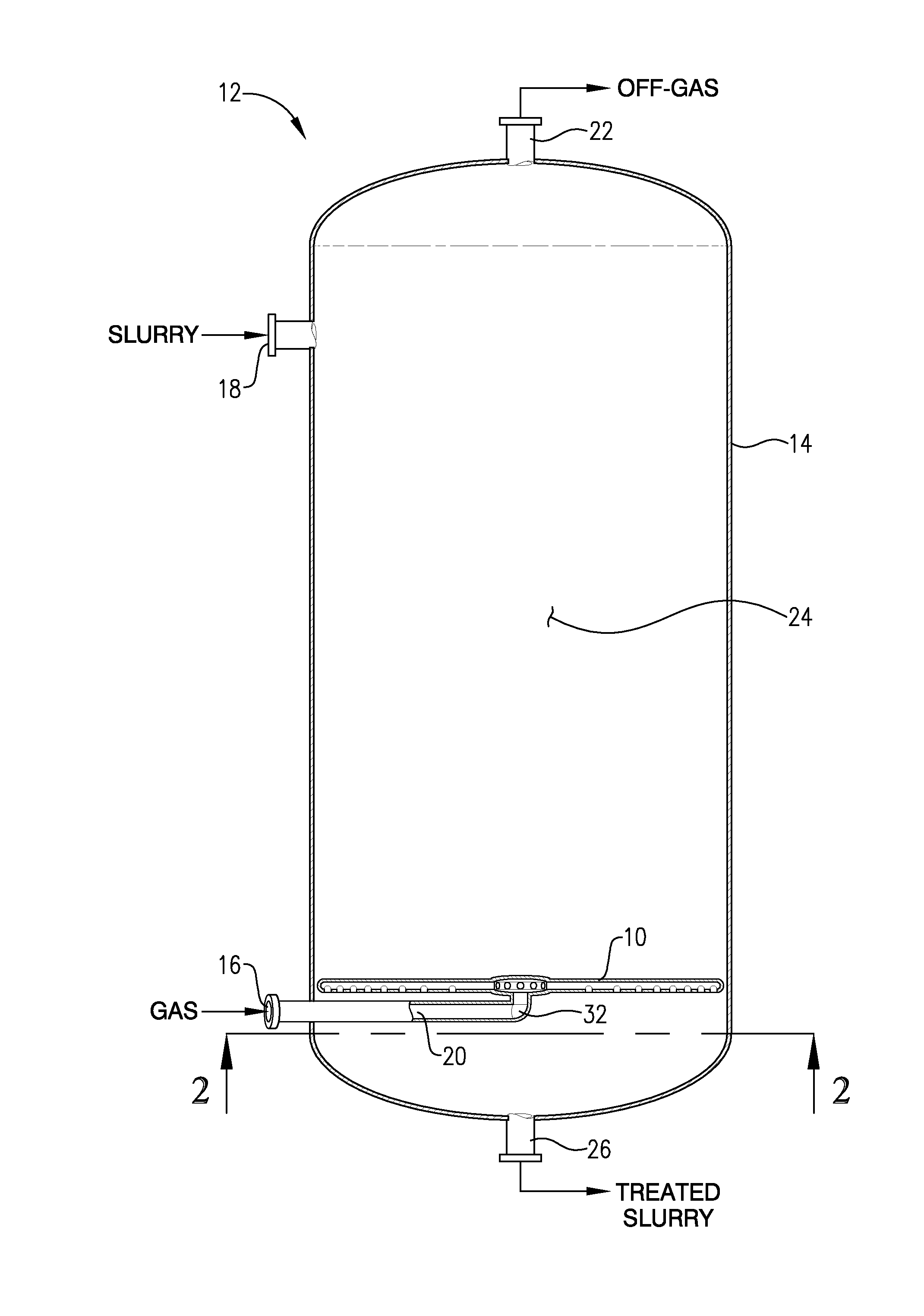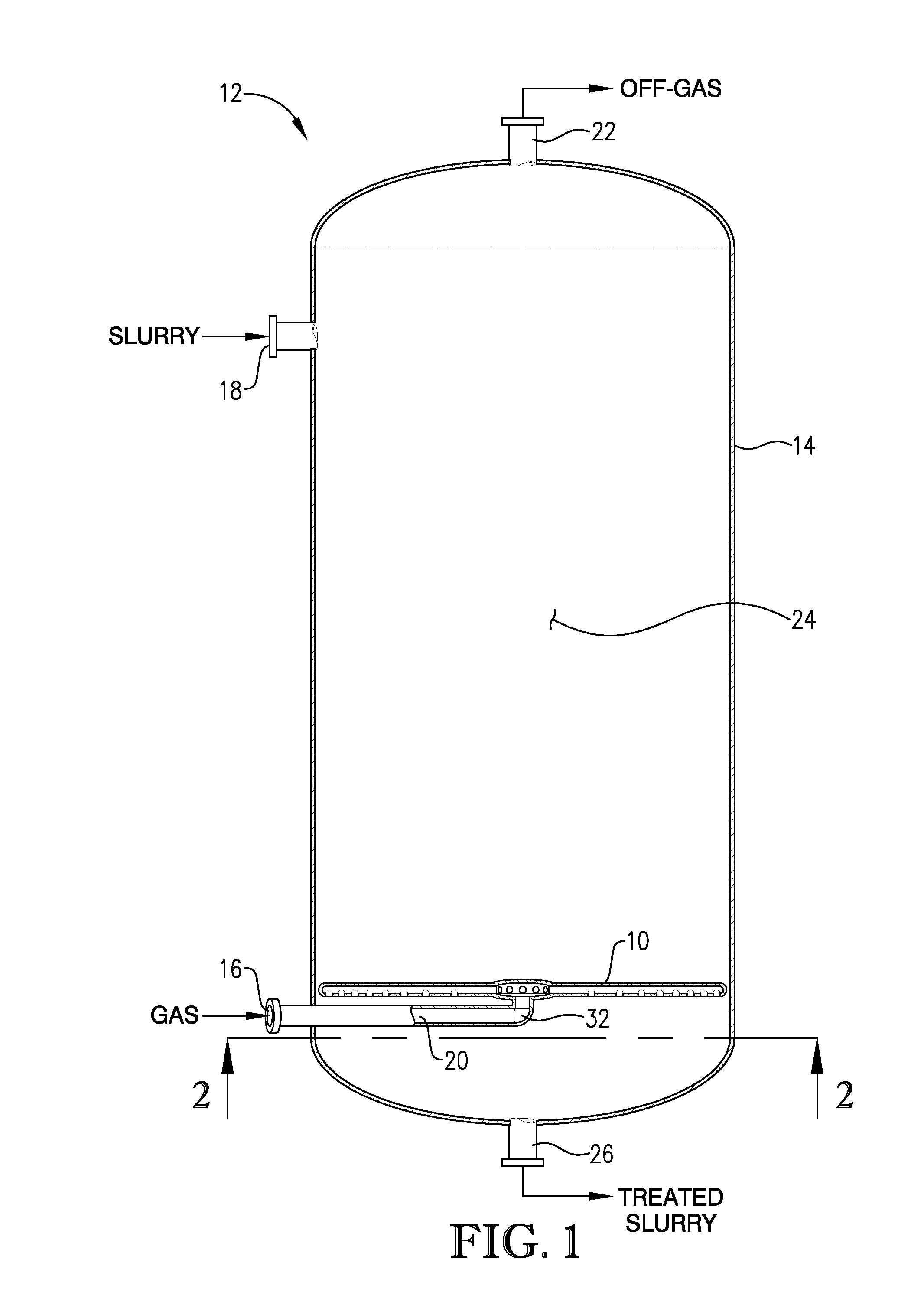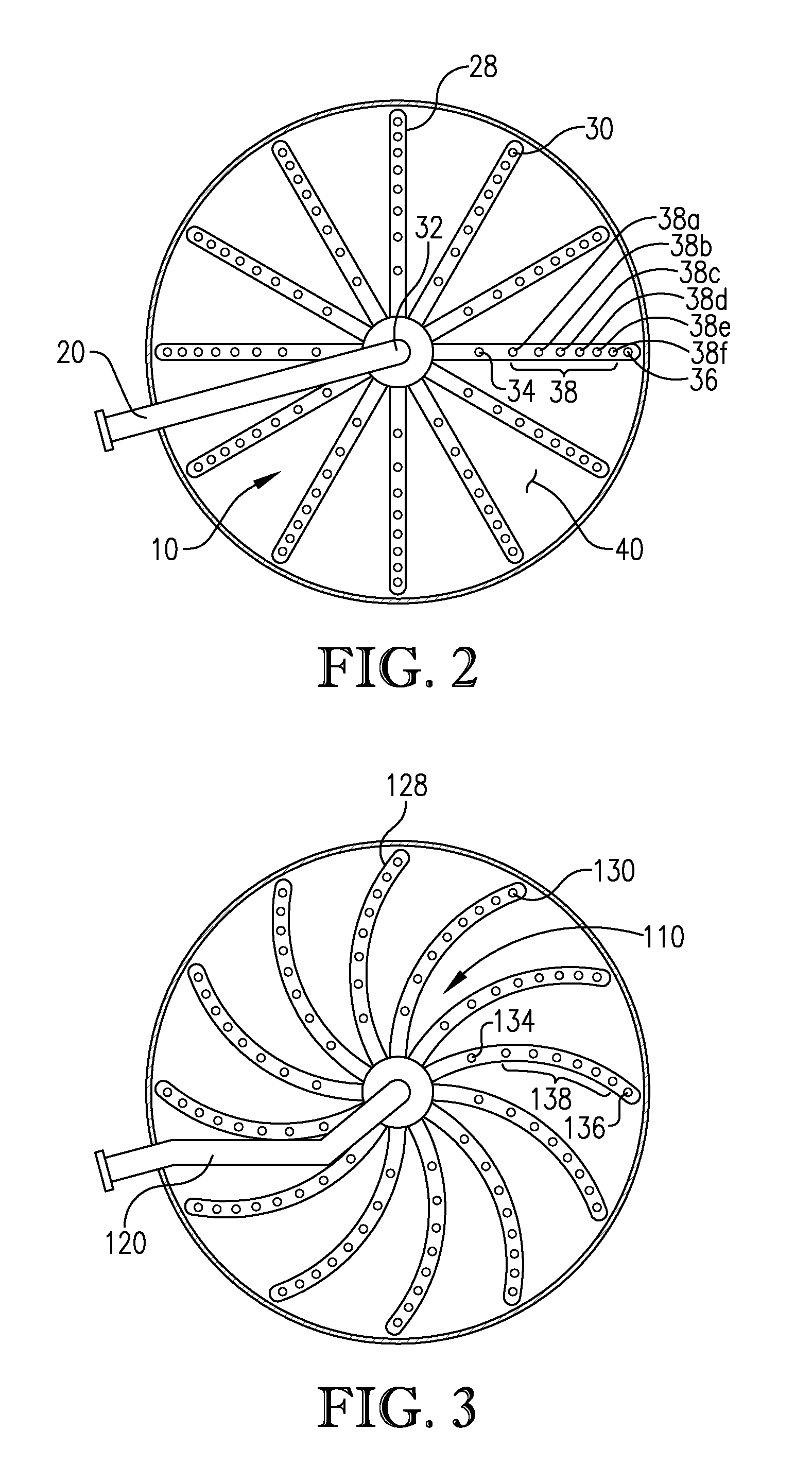Methods and Apparatus for Enhanced Gas Distribution
a gas distribution and gas technology, applied in the direction of gas-gas reaction process, other chemical processes, separation processes, etc., can solve the problems of unfavorable gas distribution, unfavorable gas distribution, and high capital cost of cstrs
- Summary
- Abstract
- Description
- Claims
- Application Information
AI Technical Summary
Benefits of technology
Problems solved by technology
Method used
Image
Examples
Embodiment Construction
[0023]Various embodiments of the invention concern a sparger for introducing a fluid into the reaction zone of a reactor, such as a bubble column reactor. Such a sparger can be employed in a system for the liquid-phase oxidation of an oxidizable compound, which can be carried out in the liquid phase of a multi-phase reaction medium contained in one or more agitated reactors. Suitable agitated reactors include, for example, bubble-agitated reactors (e.g., bubble column reactors), mechanically agitated reactors (e.g., continuous stirred tank reactors), and flow agitated reactors (e.g., jet reactors).
[0024]Referring initially to FIG. 1, a sparger 10 is shown disposed in a bubble column reactor 12. As used herein, the term “bubble column reactor” shall denote a reactor for facilitating chemical reactions in a multi-phase reaction medium, where agitation of the reaction medium is provided primarily by the upward movement of gas bubbles through the reaction medium. As used herein, the ter...
PUM
| Property | Measurement | Unit |
|---|---|---|
| average mean diameter | aaaaa | aaaaa |
| diameter | aaaaa | aaaaa |
| diameter | aaaaa | aaaaa |
Abstract
Description
Claims
Application Information
 Login to View More
Login to View More - R&D
- Intellectual Property
- Life Sciences
- Materials
- Tech Scout
- Unparalleled Data Quality
- Higher Quality Content
- 60% Fewer Hallucinations
Browse by: Latest US Patents, China's latest patents, Technical Efficacy Thesaurus, Application Domain, Technology Topic, Popular Technical Reports.
© 2025 PatSnap. All rights reserved.Legal|Privacy policy|Modern Slavery Act Transparency Statement|Sitemap|About US| Contact US: help@patsnap.com



